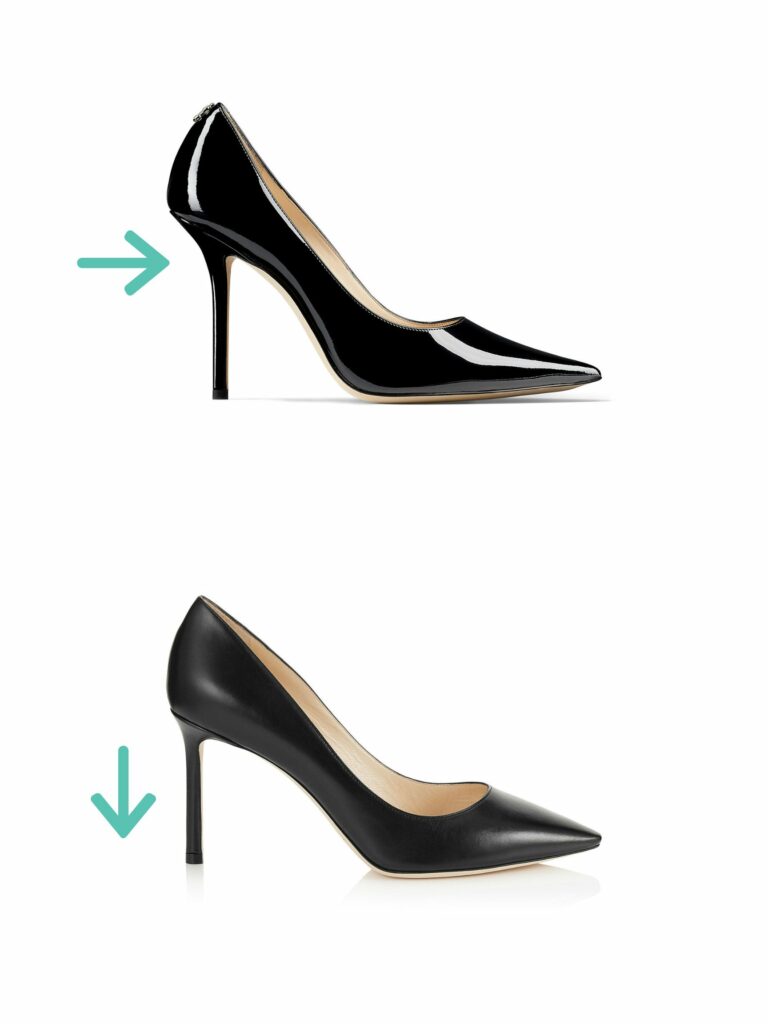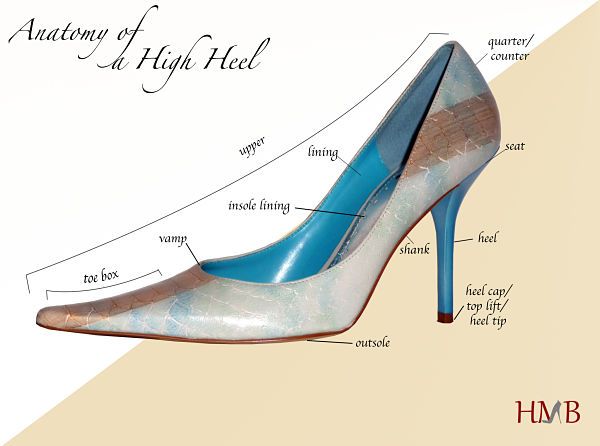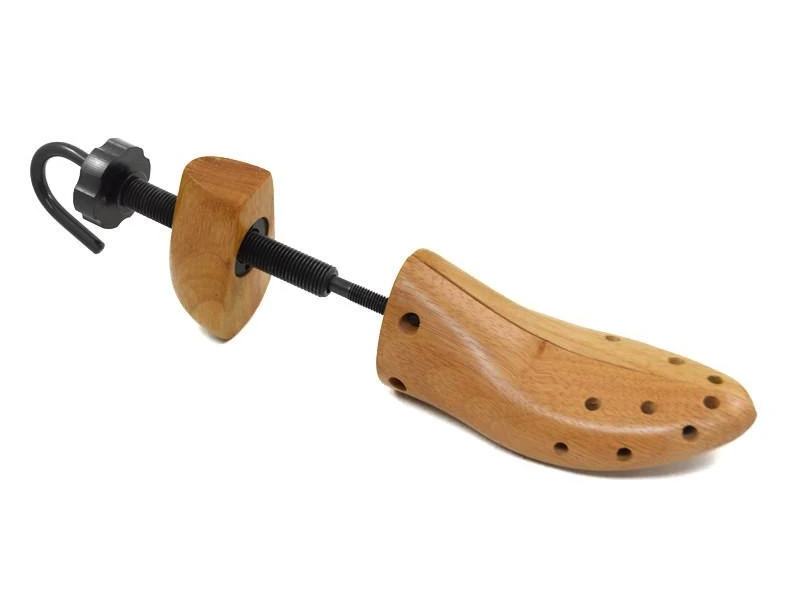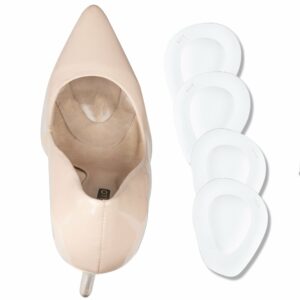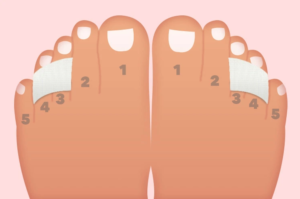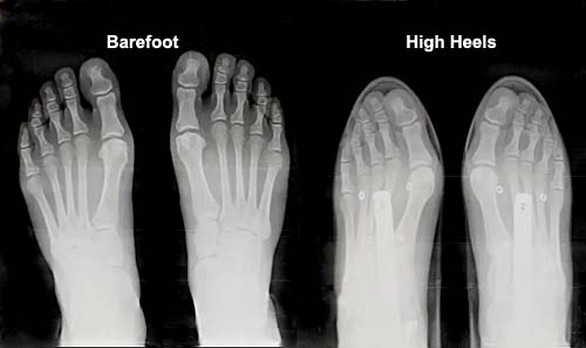There is nothing quite like the big smile and feeling of confidence when you put on your brand new pair of heels for the first time. There is also nothing quite like the existential dread you feel as you are hobbling around only one hour into the event wondering how on earth you are going to survive the day in these shoes because your feet are already throbbing. How can you wear high heels without pain? Can you wear high heels comfortably? Is it some sorcery that only a few people possess? Can you train yourself to wear high heels?
Fear not! I have the answers for you! I will go through proven tips to reduce your foot pain, and explain why you are experiencing this pain at all.
Of course, this is a physiotherapy blog, so our biased hope is that you stop wearing heals all together and opt for more comfortable shoes. But we know that isn’t realistic for most people, so here are some proven and science-based tips to help you wear high heels comfortably.
Why Do High Heels Hurt?
1. The placement of the heel
When you picture your favourite stiletto in your mind, does the heel come straight down along the back of the shoe? Or is the heel placed a bit further in? Take a look at these two different Jimmy Choo pumps:
In the first photo, you can see how the heel of the shoe is placed further down in comparison to the second shoe. If you find that when you wear heels there is pain in the ball of your foot, podiatrist Abby Towfigh suggests you opt for shoes with the heel located further in, such as the first picture.
This allows less pressure at the front of your foot, and enables your heel to help do some of the work.
You can check out her full comments in the video below:
2. Reduce the height
I’m sure this will come as no surprise, but opting for a heel height of 3 inches or lower will save your feet.
Your typical walking pattern is heel-toe heel-toe, but when you are wearing high heels that go above 3 inches, you are changing the biomechanics of your walk, shifting your balance, and your feet want to change to toe-heel toe-heel in order to keep you upright.
If your absolute favourite pair of heels is above 3 inches, don’t worry! A shoe cobbler can reduce the heel height of most shoes by up to a full inch.
It is important to note here that just because your heels are lower does not mean that your posture and gait have not changed. Take a look at this quick video below from the Musicians Health Collective to see how even just standing still in 2 inch heels your posture changes:
3. The shape of the toe
It’s not uncommon to hear someone warn you to stay away from pointed toe shoes and try for a more rounded toe. While this does make sense in theory, in practice the shape of the toe may play a different role than you think.
If you experience pain on the side of your foot either near your baby toe or your big toe (or the ‘bunion zone’), how high the vamp (the lip of the toe section) goes can actually play an important role. Make sure the vamp does not cut across or near the area you typically experience irritation.
The insole of the shoe can also help you here. A leather insole is recommended so it can better mold to your foot, just like the material of the lining and outside of the shoe can stretch around your foot as well.
Where the toe shape can play an important role depends on how much of the toe box your foot fills. If you have shorter toes, you may find you have no problem wearing pointed shoes, because you toes do not squish into the toe box. However, if you have longer toes you may find yourself avoiding pointed shoes altogether because the toe box is not large enough to accommodate your foot.
There is no true rule for which type of shoe is best for your foot. The best unit of measurement is you! Let your feet tell you what is more comfortable.
4. Chunkier heel for an increased base of support
The skinnier the heel, the more difficult it is to balance. A simple way to think of your base of support is to start standing with no shoes on. Have your feet shoulder-width apart. Have someone give you a gentle push if you’d like to really test it. Then, go down on all fours and have someone gently push you again. Now, stand on one foot and try again.
Having done this, it is easy to think of how a thicker heel can give you more balance than a stiletto!
How Can I Wear High Heels Without Pain?
5. Stretch those puppies out
Some people prefer wearing thicker socks with your heels around the house first to stretch out your shoes, some people say use a blow dryer on them before putting your feet in. The bag of ice in the freezer trick is also popular!
Personally I grew up with the sock trick, and if that didn’t work my mother would pull out: the shoe stretcher.
It looks like something you would find in a Wish ad – and you’re right! You can actually buy them on Wish now. Your feet should be able to move in your shoes, so stretch them out if you need to.
6. Gel or padded inserts
If you watched the first video in this post, you will have heard about a couple different types of shoe inserts you can use to minimize your foot pain. Keep in mind that adding padding of any kind to a shoe will make the shoe fit tighter, so make sure you can still move your foot around comfortably in your shoe after.
Here are a few options, and what is best to use them for:
- Ball of Foot Cushions. These are placed exactly where you think they would be – under the ball of your foot. This allows an extra cushion under the ball of your foot to improve shock absorption and aid in pain relief. There are multiple different types you can buy depending on how you want them to sit. A pair from Dr. Scholl’s can typically cost around $6.99.
- Gel Heel Liners. If the back of your shoe rubs against your heel/ankle a lot and you want to avoid blisters, try some gel heel liners. They usually cost under $10, and can come in a more malleable gel or a stiffer fabric lining.
- High Heel Insole Inserts. Placing an insert below your heel that runs through half or more of the sole of the shoe can help not only add cushioning to your heel, but can assist your foot by altering the weight distribution.
- Arch inserts. If you have a very high arched foot, some people find having a shoe cobbler place an arch support under the insole can make a huge difference in comfort.
- Toe Guard or Bunion Protector. If your shoe irritates the outside of your foot, you can get a silicone pad that loops around your toe! There are some designed for going around your baby toe, and some that are for your big toe that protect the ‘bunion zone’. There are even silicone guards that have an added piece to the toe loop made to help in bunion correction – although we cannot guarantee their effectiveness in this regard. But if blisters are something you want to avoid on the sides of your feet – try these out!
7. Tape your toes
This may sound like an old wives tale or something that only happens when you have a broken toe, but there is actual science behind this!
"It is possible to minimize pain by hacking the science behind your body to work to your advantage."
podiatrist Joan Oloff
In a 2017 interview, podiatrist Joan Oloff explained how this strange hack works:
“The metatarsals, or five long bones of the foot, end at the ball, and heels can cause pain to the bone endings more than flat shoes would. Additional pressure can also be put on the toes, which tend to contract more when wearing heels. But a lot of the pain one feels comes from small intermetatarsal nerves that run in between the bones of the foot themselves, and when wearing heels, the nerves become irritated and enlarged.”
“This causes a bursa to surround the nerve and fill up with inflammatory tissue, causing pain. The most common nerve that gets irritated is the one that sits between the third and fourth toes, mainly because the toes spread apart when the tissues enlarge,” Oloff said. “Because of this, taping one’s toes can remove some pressure from the nerve and inflamed tissues.”
8. Wear them Less
This may seem like the most obvious tip, but it is the most important!
When you are going to a wedding or work and you have the perfect pair of heels to wear, don’t put them on until you actually arrive to the event! Wear a comfortable pair of shoes to and from events to give your feet a break.
Give your feet micro breaks during the day as well! If you like to wear heels to work, take them off while you sit at your desk, even if your feet don’t hurt yet. You can still wear heels to work and wear them less – every little break helps!
Are High Heels Bad for You?
It is no secret that your risk of ankle sprains increases when wearing high heels. Additional problems with high heels include altering the mechanics of your foot and your gait, over stretching some muscles, shortening other muscles, resulting pain in your knees, hips and back… we could go on.
When you regularly wear heels, you can sprain the ligament under your first toe’s proximal joint, and it is not uncommon to find your achilles tendon thickens.
The thickening of a tendon may not sound like a bad thing, but let’s take a look at why it thickened due to your shoe choice.
In a 2010 study, R. Csapo et al. found that the achilles tendon is thicker and stiffer in women who wear high heels often. When comparing the actual length of the tendon to women who opt for flats, the length of the tendon was often the same. The problem with this is that the achilles tendon in women who wore heels did not stretch to accommodate for the shortened calf muscle regular high heel wear caused.
This resulted in pain when walking flat footed, as the calf muscles and achilles tendon could no longer stretch appropriately.
To avoid this problem, make sure you engage in regular stretches for everything from your toes to your knees! If you are already experiencing a lot of pain when you walk, make sure you speak with your physiotherapist to learn which stretches are best for you.
Are you having pain in your feet, knees, hips or back from your choice in footwear?
Call us at 519-895-2020, or use our online booking tool on www.strivept.ca to book an appointment with one of our knowledgeable physiotherapists Kitchener, and they will be sure to help you understand your injury.
Cheers,
Chelsea & Amanda
Strive Physiotherapy & Performance
